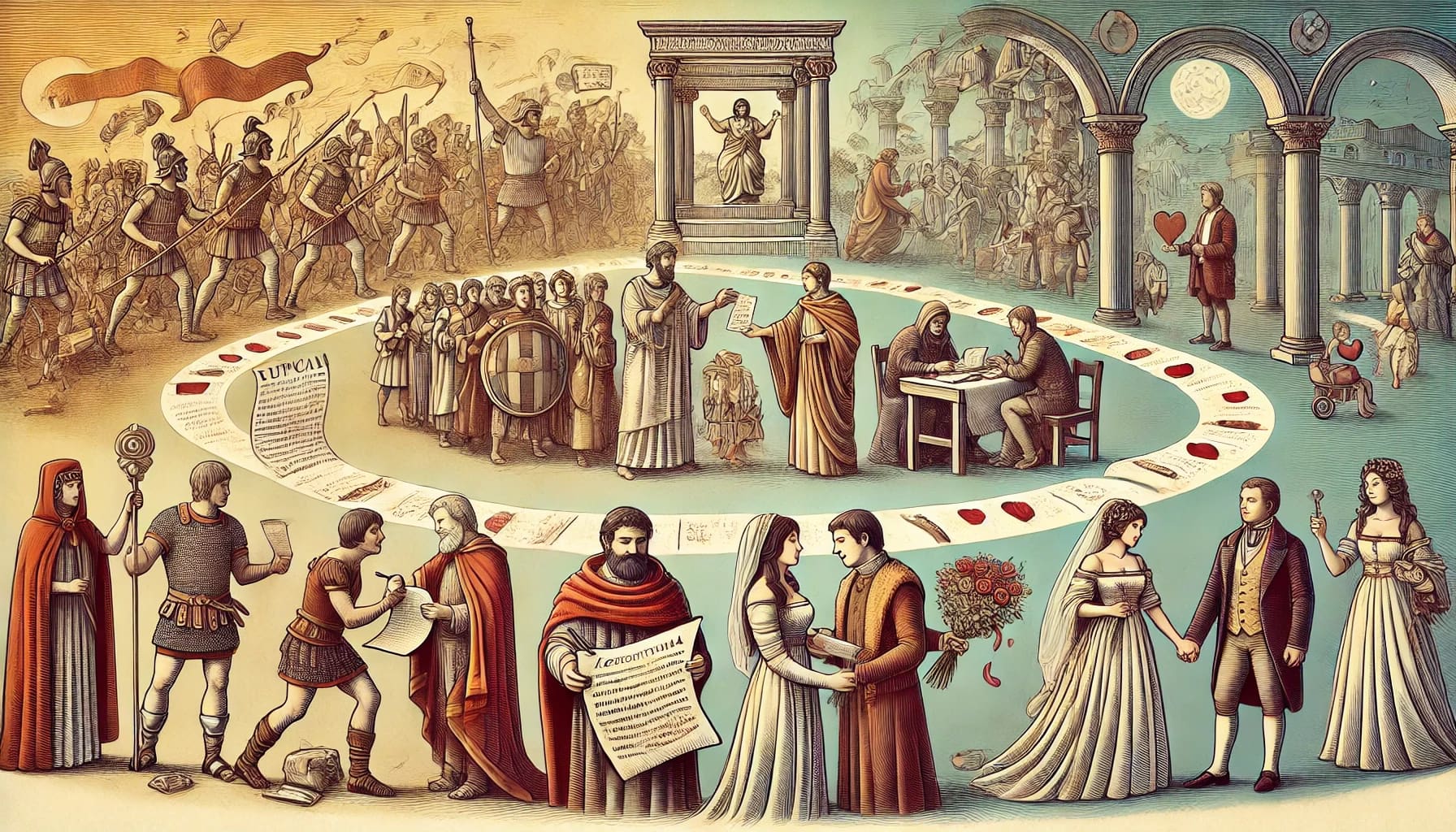Valentine’s Day, celebrated every year on February 14th, is a day dedicated to love, affection, and heartfelt expressions. But have you ever wondered how this day of romance came to be? Beyond the flowers, chocolates, and greeting cards lies a rich history that spans centuries, blending ancient traditions, religious reverence, and cultural evolution. Let’s take a journey through the historical roots of Valentine’s Day and explore why it continues to hold such importance in our lives today.
The Ancient Origins: Lupercalia and Fertility Festivals
The origins of Valentine’s Day can be traced back to ancient Rome, where the festival of Lupercalia was celebrated in mid-February. This pagan festival was dedicated to Faunus, the Roman god of agriculture, and Romulus and Remus, the founders of Rome. The celebration involved rituals aimed at promoting fertility and health, including the pairing of men and women through a lottery system. While Lupercalia was far from the romantic holiday we know today, it laid the groundwork for the association of February with love and partnership.
The Christian Influence: Saint Valentine
The transformation of Valentine’s Day into a celebration of love is often attributed to the Christian church. The most popular legend revolves around Saint Valentine, a priest who lived in the 3rd century under the rule of Emperor Claudius II. Claudius had banned marriages for young men, believing that single men made better soldiers. Defying the emperor’s decree, Saint Valentine secretly performed marriages for young couples. When his actions were discovered, he was imprisoned and eventually executed on February 14th.
Another version of the story suggests that Valentine, while in prison, fell in love with the jailer’s daughter and sent her a letter signed “From your Valentine,” a phrase that endures to this day. Whether fact or folklore, these tales of sacrifice and love cemented Valentine’s legacy as a symbol of romance.
The Medieval Connection: Chaucer and Courtly Love
Valentine’s Day as we recognize it began to take shape during the Middle Ages. The English poet Geoffrey Chaucer is often credited with linking the day to romantic love in his 14th-century poem Parlement of Foules, where he wrote, “For this was on seynt Volantynys day, Whan euery bryd comyth there to chese his make” (For this was on Saint Valentine’s Day, when every bird comes there to choose his mate). This association between Valentine’s Day and the mating of birds helped popularize the idea of the day as one for lovers.
During this time, the concept of courtly love also flourished, emphasizing chivalry, admiration, and the expression of deep affection. Noblemen and women began exchanging handwritten notes, known as valentines, to declare their love.
The Modern Evolution: Cards, Cupid, and Commercialization
By the 18th century, Valentine’s Day had become a widespread tradition in England, with people exchanging handmade cards adorned with lace, ribbons, and romantic verses. The industrial revolution of the 19th century brought mass-produced greeting cards, making it easier for people to express their feelings. Esther A. Howland, known as the “Mother of the American Valentine,” played a pivotal role in popularizing elaborate, commercially produced valentines in the United States.
Today, Valentine’s Day is a global phenomenon, celebrated with gifts, romantic dinners, and grand gestures. While some criticize its commercialization, the day remains a powerful reminder to cherish and celebrate love in all its forms.
The Importance of Valentine’s Day
Valentine’s Day is more than just a commercial holiday; it’s a celebration of human connection. In a fast-paced world, it offers a moment to pause and express gratitude for the people who enrich our lives—whether it’s a romantic partner, a friend, or a family member. It’s a day to celebrate love in its many forms: romantic love, platonic love, and self-love.
Moreover, Valentine’s Day serves as a universal reminder of the enduring power of love. From ancient rituals to modern traditions, the essence of the day has always been about connection, kindness, and the joy of giving. It’s a testament to the fact that love, in all its forms, is a fundamental part of the human experience.
Celebrating Valentine’s Day in Your Own Way
While the traditions of Valentine’s Day are beautiful, the most meaningful celebrations are those that reflect your unique relationships. Whether it’s writing a heartfelt letter, cooking a special meal, or simply spending quality time with loved ones, the true spirit of Valentine’s Day lies in the sincerity of your gestures.
As we celebrate this day of love, let’s honor its rich history and remember that love is not confined to a single day—it’s a lifelong journey. So, this Valentine’s Day, take a moment to appreciate the love that surrounds you and share it with those who matter most.
Conclusion
Valentine’s Day is a beautiful blend of history, tradition, and emotion. From its ancient roots in Roman festivals to its modern-day celebrations, the day has evolved into a universal symbol of love and connection. As we exchange gifts and words of affection, let’s remember the timeless essence of this special day: love is the thread that binds us all.
Happy Valentine’s Day! 💕
Discover more from Pasindu Lakshan Perera
Subscribe to get the latest posts sent to your email.




